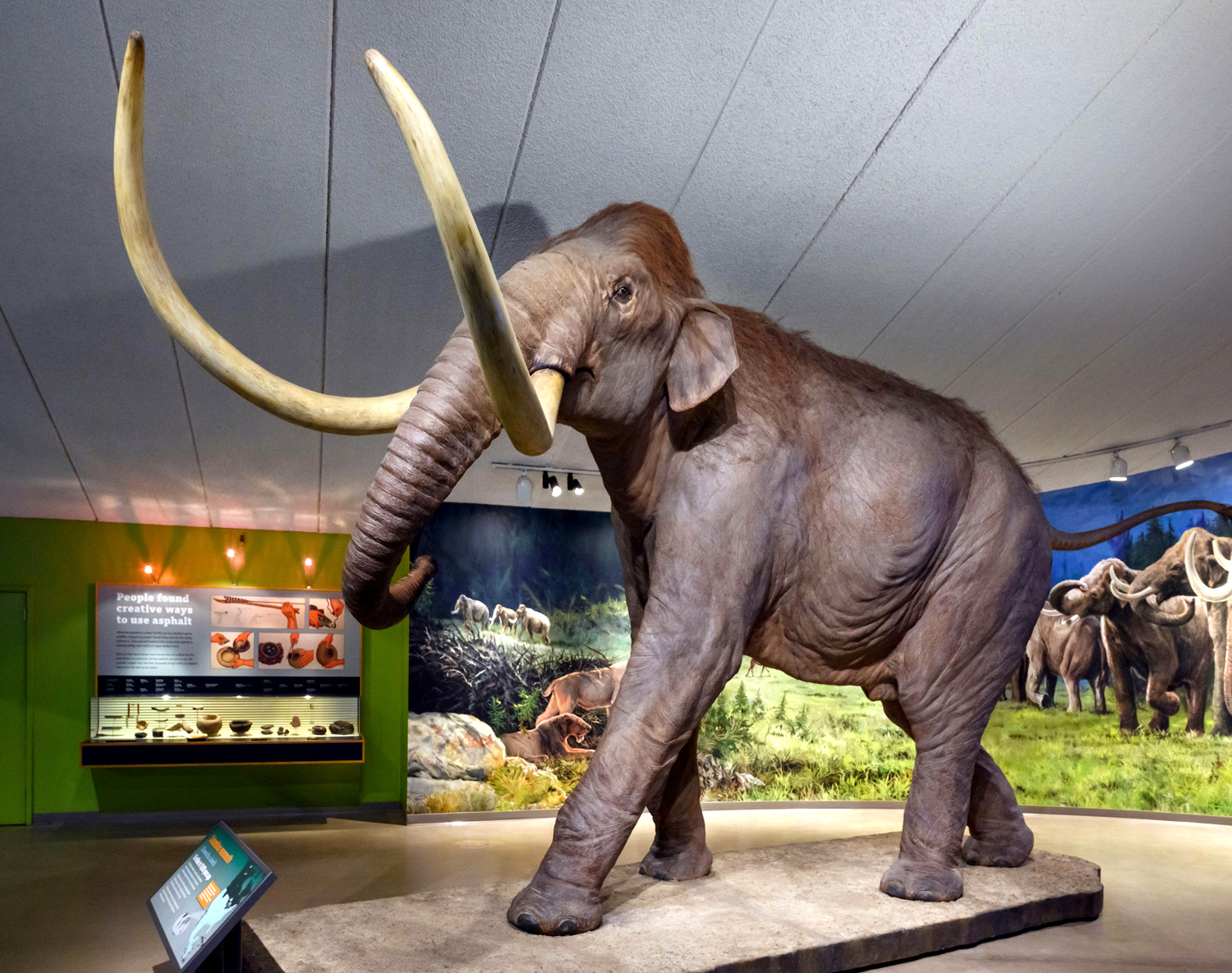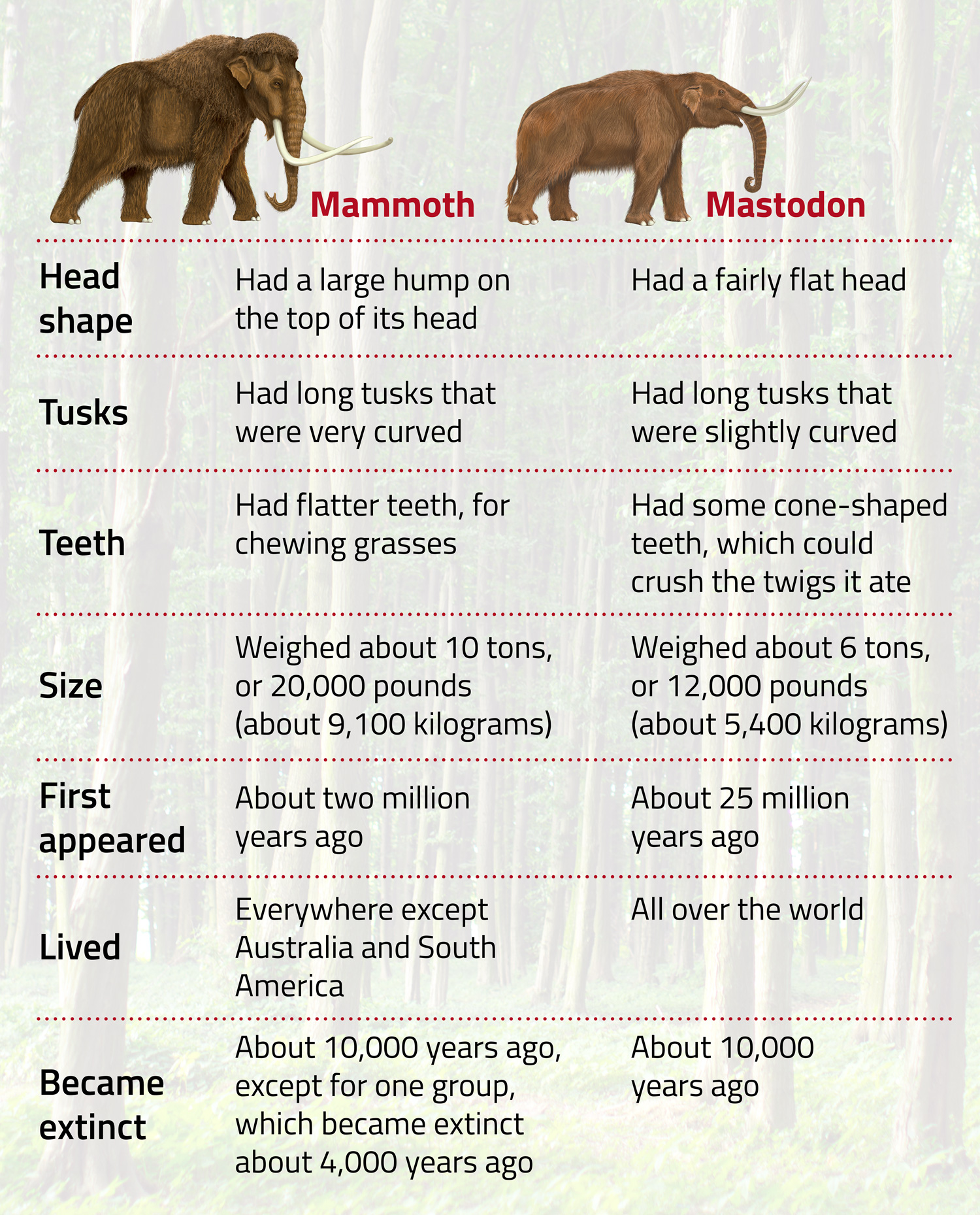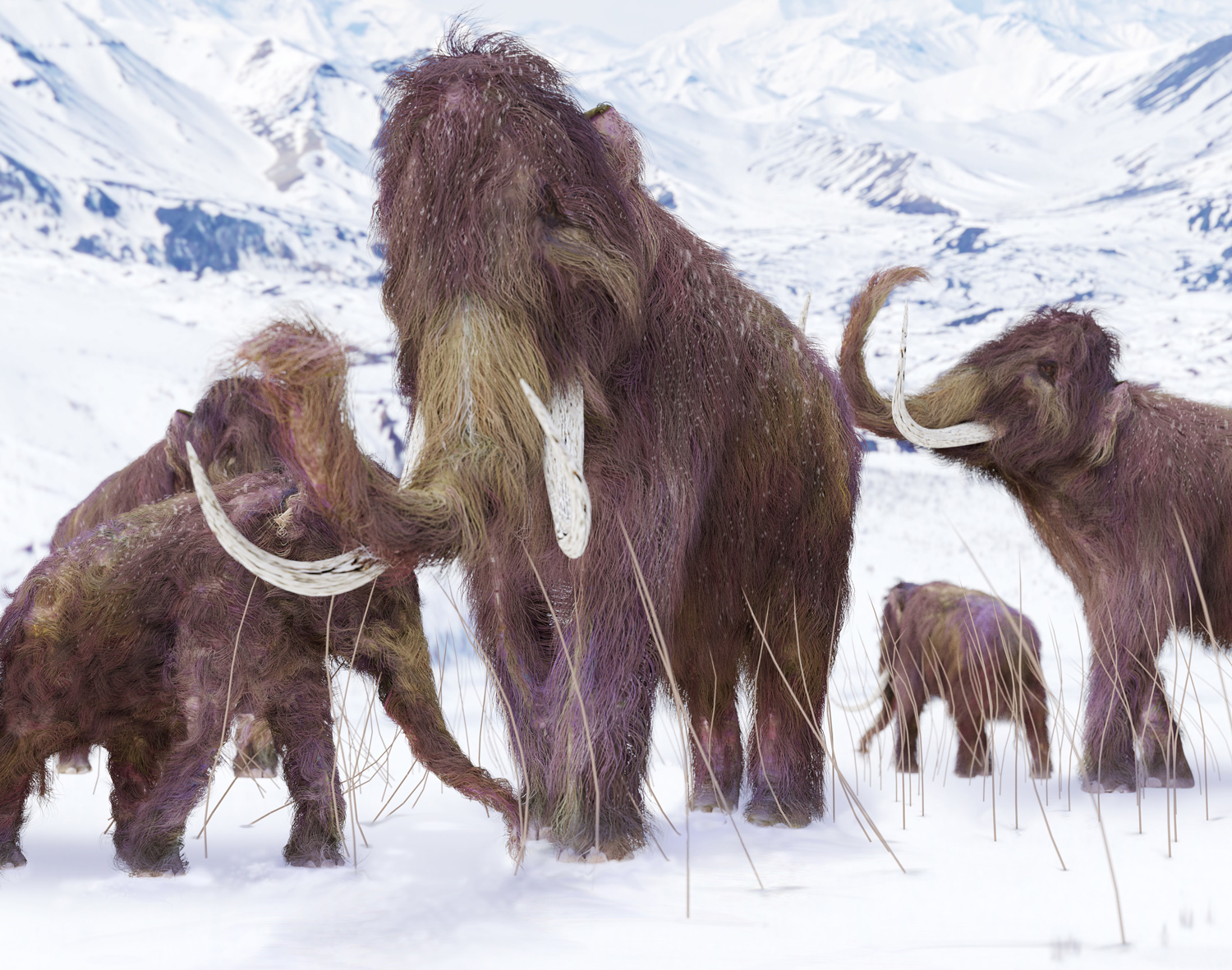A Giant Discovery
A man in Mississippi discovered a mammoth tusk that’s more than 10,000 years old.
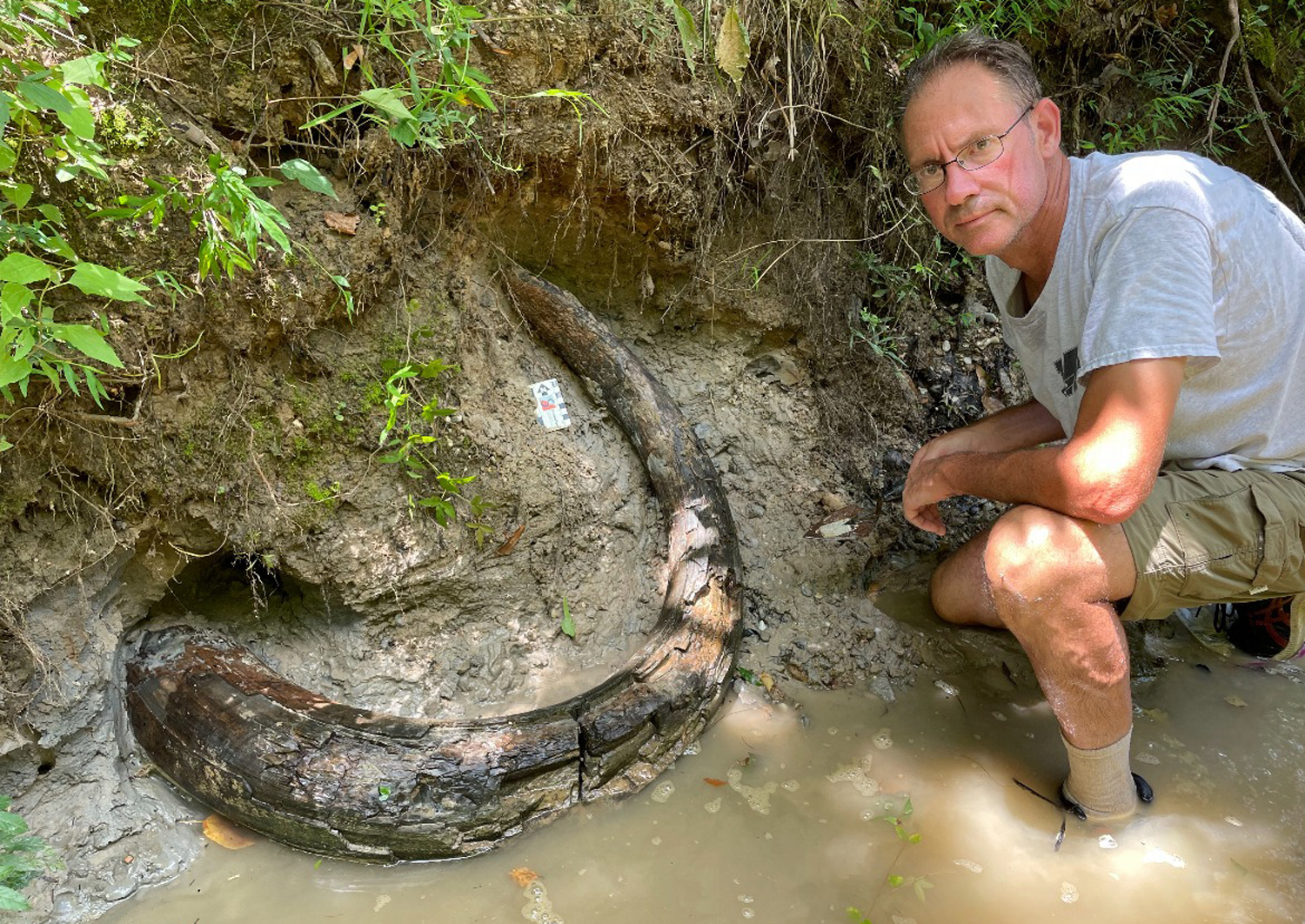
Mississippi Department of Environmental Quality
A scientist poses with a Columbian mammoth tusk that was discovered by fossil hunter Eddie Templeton.
Eddie Templeton loves to look for fossils, and he’s found quite a few in Mississippi, where he lives. But in August 2024, Templeton came across something he’d never found before—the tusk of a prehistoric, elephant-like animal called a Columbian mammoth.
Templeton found the tusk sticking out of a mudbank in a creek, where it had been for a long time. Scientists say Columbian mammoths lived between 11,700 and 75,000 years ago, during the Ice Age. Although they looked a lot like elephants, they were far bigger, weighing nearly 22,000 pounds (10,000 kilograms) and growing to be more than 13 feet (4 meters) tall. At 7 feet (2 meters) long, the tusk Templeton discovered was also huge. And it was still in one piece!
At first, Templeton thought the tusk had belonged to a mastodon, another relative of the modern elephant. Templeton and others have found many mastodon fossils in the area. But while Columbian mammoth teeth have been discovered in Mississippi, no one had ever found one of its tusks there. That’s because mammoths couldn’t live in as many different habitats as mastodons could, so their numbers were smaller.
Still, there was something about this tusk. It was curved, nearly making the shape of a C. Mammoths tusks were much more curved than mastodon tusks.
“When I learned it was a mammoth and not a mastodon, I got even more excited,” Templeton told the Mississippi Clarion Ledger. “I’ve never found any part of a mammoth. I always hoped to find a part of a mammoth, but that’s pretty rare down here.”
Templeton sent George Phillips, a paleontologist who works at the Mississippi Museum of Natural Science, a photo of the tusk. Soon, a team of scientists arrived at the site. It was clear that Templeton had found something rare and special.
“I was kind of open mouthed when I saw the picture,” Phillips told CNN. “I thought, ‘OK, well, cool, a tusk. Wait a second…it’s so curved…. This a mammoth tusk.’”
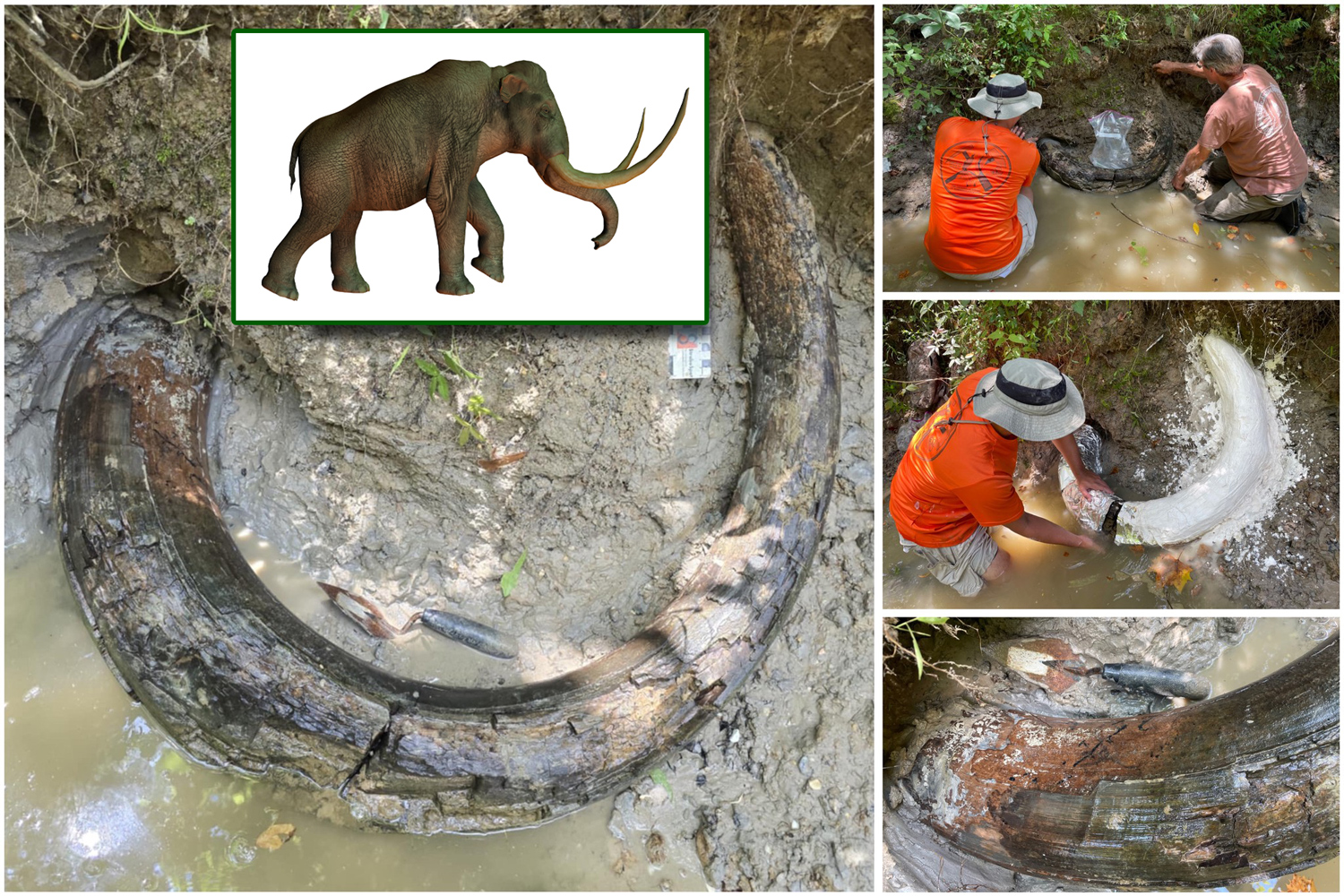
Mississippi Department of Environmental Quality, © Corey A Ford/Dreamstime.com; Photo composite Encyclopædia Britannica, Inc.
Eddie Templeton discovered the Columbian mammoth tusk in these photos. In one photo, the tusk has been put in plaster so it can be moved.
The tusk has been taken to the museum, where it will be displayed.
“This is the first complete mammoth tusk found in Mississippi,” Templeton told CNN. “And so that’s pretty cool.”

